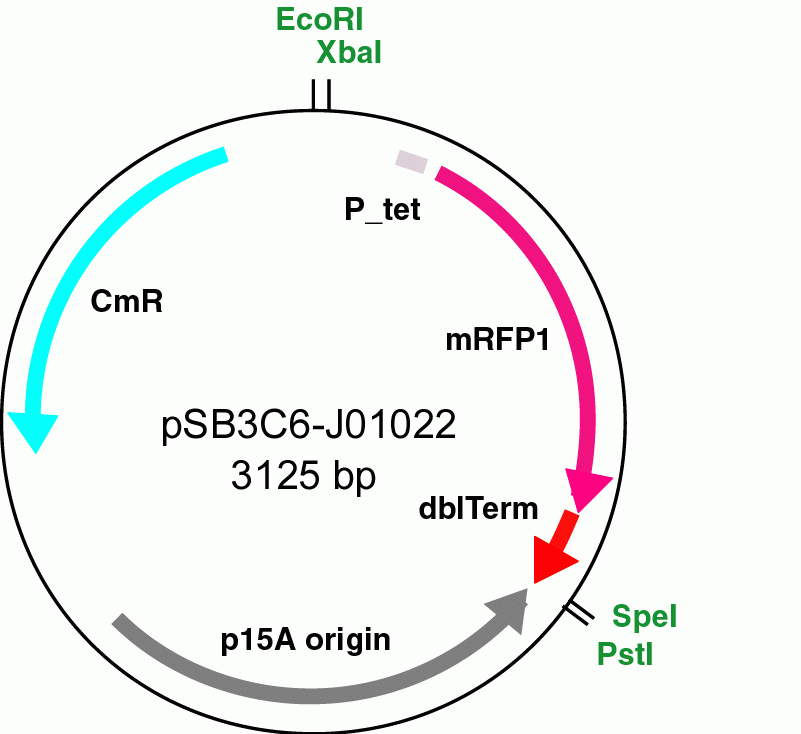Berkeley2006-PlasmidPartsMain
From 2006.igem.org
JCAnderson (Talk | contribs) |
JCAnderson (Talk | contribs) |
||
| Line 1: | Line 1: | ||
'''Implementatin of these experiments required the development of new Biobrick-compatible plasmid parts for constructing two-plasmid systems in ''E. coli'' and making basic parts.''' | '''Implementatin of these experiments required the development of new Biobrick-compatible plasmid parts for constructing two-plasmid systems in ''E. coli'' and making basic parts.''' | ||
| - | [[Image:Berkley2006-pSB3C6Map.GIF | | + | [[Image:Berkley2006-pSB3C6Map.GIF |center|300px]] |
The combination of a p15A and a colE1 origin of replication plasmid is the most common two-plasmid system for use in ''E. coli''. The pSB1A* series of plasmids contain the colE1 plasmid and cannot be co-maintained at stable copy numbers in combination due to plasmid incompatibility. Here, two plasmids in the same cell with origins from the same incompatibility group compete for replication machinery, reslting in unpredictable copy number and often the exclusion of one of the plasmids. This is circumvented by cotransforming plasmids with origins from distinct incompatibility groups. Since no p15A origin plasmid was present in the Registry, we developed part J23****, or pSB3C6 for our studies. This plasmid was used for all our riboregulator experiments for the locked-RFP reporter. Shown here is the variant of the plasmid containing part J01022. | The combination of a p15A and a colE1 origin of replication plasmid is the most common two-plasmid system for use in ''E. coli''. The pSB1A* series of plasmids contain the colE1 plasmid and cannot be co-maintained at stable copy numbers in combination due to plasmid incompatibility. Here, two plasmids in the same cell with origins from the same incompatibility group compete for replication machinery, reslting in unpredictable copy number and often the exclusion of one of the plasmids. This is circumvented by cotransforming plasmids with origins from distinct incompatibility groups. Since no p15A origin plasmid was present in the Registry, we developed part J23****, or pSB3C6 for our studies. This plasmid was used for all our riboregulator experiments for the locked-RFP reporter. Shown here is the variant of the plasmid containing part J01022. | ||
Revision as of 04:26, 29 October 2006
Implementatin of these experiments required the development of new Biobrick-compatible plasmid parts for constructing two-plasmid systems in E. coli and making basic parts.
The combination of a p15A and a colE1 origin of replication plasmid is the most common two-plasmid system for use in E. coli. The pSB1A* series of plasmids contain the colE1 plasmid and cannot be co-maintained at stable copy numbers in combination due to plasmid incompatibility. Here, two plasmids in the same cell with origins from the same incompatibility group compete for replication machinery, reslting in unpredictable copy number and often the exclusion of one of the plasmids. This is circumvented by cotransforming plasmids with origins from distinct incompatibility groups. Since no p15A origin plasmid was present in the Registry, we developed part J23****, or pSB3C6 for our studies. This plasmid was used for all our riboregulator experiments for the locked-RFP reporter. Shown here is the variant of the plasmid containing part J01022.
Next Section: Logic Computation in Cellular Networks
